It is now 100 years since the Romanov family, their household staff and even their pet dogs were executed, and the world changed forever, with scores of millions more to be slaughtered by the Bolsheviks. But in their dying, the imperial family became martyred saints. They died for one reason only: they were Christians. Here is a detailed look at the evidence uncovered by White Russian investigators who briefly liberated the region from the Bolsheviks shortly after this heinous—and possibly ritualized—massacre took place.
By Michael Walsh
Before the outbreak of the 1914-1918 war, Warsaw shops patronized by the Jewish community furtively sold greeting cards, the message of which would be lost on most “gentiles.” Each greeting card carried an image depicting a Jewish man with a Torah in one hand and a white fowl in the other. The bird’s head is a facsimile of the head of Imperial Russia’s Czar Nicholas II. Below this image is an inscription in Hebrew that translates: “This is a sacrificial animal so is my cleansing; it will be my replacement and cleansing the victim.” This message relates to the Yom Kippur atonement ritual in which the live bird sacrifice is swung about the head before being slaughtered by the shechitamethod, i.e., the creature’s blood being drained. This greeting card is a duplicate of early 1900’s American Jewish cards first discovered in the United States in 2007. The ritual slaughter of Czar Nicholas II was the dream of many Jews. This curiosity is dismissed by the court historians as being due to the czar’s alleged “anti-Semitism.” In fact, his anti-Semitism was hardly unique. Many heads of state were outspoken in their criticism of the Jewish community.

On April 30, 1918 the imperial family arrived at the Ekaterinburg station and was arrested. The prisoners were handed over to the Ural Regional Council (URC). From right to left above are pictured: Maria Romanova, V. Yakov lev, Czarina Alex andra, Czar Nicholas II and P.V. Guzakov. URC jailers from left to right are: A.D. Avdeev, P. Goloshchyokin, A. Beloborodov and B.V. Did kovsky. Below, the Romanov daughters are pictured in a portrait taken in 1916, just two years before their murder. Left to right are Olga, Tatiana, Maria and Anastasia,

The revolutionary Yakov Sverdlov ordered the slaughter of Czar Nicholas II, his entire family and all assistants upon their arrest. Regicide was a cherished ambition for this Jewish revolutionary. This is proven by the text of leaflets written by Sverdlov. These were published May 19, 1905, a date that marks the birthday of Nicholas. The text on the leaflets reads: “Struck your hour, the last hour of you and all yours! This is a terrible judgment; the revolution is coming!” The decision to massacre Russia’s imperial family was taken by the “Ural authorities.” The decision is consistent with the stated demands of Sverdlov, chairman of the Central Executive Committee of Soviets of Workers and Soldiers Deputies. The massacre’s organizers and accompanying guards were militants involved in the organization of the future Communist party, the Russian Social Democratic Labor Party. Its 1905 genesis was in the Urals when the group was under the direction of Sverdlov. At the time of the slaughter, the aforementioned were the main participants in the massacre of the Romanovs.
Long before the Wall Street inspired 1917 coup that delivered czarist Russia to mostly American corporate interests, Sverdlov and Bolshevik insurrectionists served prison sentences or were otherwise exiled to Siberia. Militant Sverdlov was exiled to Turukhansk as were Josef Stalin, Julius Martov (Tsederbaum) and Aron Solts. The malevolent Sverdlov gathered around him the most aggressive and ruthless elements of this loose-knit association of brigands. Sverdlov was reputed to be pathologically sadistic. Such were the gratuitous cruelties inflicted on those he regarded as expendable that even fellow party members already accustomed to extreme violence were appalled. On the eve of the 1905 Revolution and during his exile, Sverdlov formed an organization known as the Battle Squad of the People Weapons (BONV). This sinister terrorist group slaughtered indiscriminately in ways that would make today’s ISIS terrorists appear docile by comparison.
The band’s victims included anyone thought to be in the pay of, or sympathetic toward, czarist Christian Russia. The band increased its wealth following constant attacks on banks, post offices, cash desks, trains and shops. “They were desperate murderers,” writes Eduard Hlystalov, who describes the marauders’ leader as “the frail, bespectacled Yakov Sverdlov.” Philippe (Shaya-Isay Fram) Goloshchyokin, personal and plenipotentiary ambassador of Sverdlov, dealt with all the gang’s organizational details. The Ural region was soon to become Sverdlov’s personal fiefdom. The revolutionary placed those he considered loyal to him in government positions throughout the Urals.
The train carrying the soon-to-be martyred family departed Tobolsk on April 26, 1918 to arrive in Tyumen during the evening of April 27. On April 30, the train from Tyumen arrived in Yekaterinburg, where Vasily Yakovlev signed over delivery of the imperial couple and their daughter Maria to the head of the Ural Council, Alexander Beloborodov. As the Bolsheviks increased their hold on Russia, confidence was such that it was decided that the children, the ill Alexei and his sisters Olga, Tatiana and Anastasia, were to rejoin their mother, father and sister Maria in Yekaterinburg. The children left Tobolsk in May 1918. Czarevich Alexei and his three sisters arrived in Yekaterinburg on May 23, 1918, accompanied by a group of servants and officials of the royal retinue.
On July 16, 1918, the day before the massacre, there arrived in Yekaterinburg a special train consisting of a locomotive and a single passenger carriage. The few passengers included one person in the black attire of a Jewish rabbi with his face disguised. The rabbi was greeted by Goloshchyokin and accorded with maximum respect as might a visiting dignitary. The rabbi was accompanied by a security detachment of six soldiers. Upon being directed to the basement of the Ipatiev house the rabbi traced kabbalistic signs and writing on the wall: “The czar sacrificed, the kingdom destroyed! This notifies all peoples about this.”
Yakov Yurovsky supervised the imperial family’s assassination. He was responsible for administering the coup de grace and afterward searching the bodies. Pyotr Voykov (Pinhus Wainer) took part in the shooting and assisted in carrying out the death strokes by bayoneting the victims. Later, he was delegated to destroy the family’s remains through a combination of dismemberment and the use of sulfuric acid. Scrawled writing was afterward found on the walls of the room in which the imperial family was slaughtered. These were originally translated and transcribed by German- Jewish poet Heinrich Heine (1797-1856) before being used by the killers. The lines appear on the wall which the imperial family had their backs to whilst being gunned down and stabbed.
There was also writing discovered near the basement window of the Ipatiev house. “Belsatzar ward in selbiger Nacht / Von seinen Knechten umgebracht,” or in English, “Belshazzar was, on the same night, killed by his slaves.” In the Old Testament story, the king of the gentile Babylonians, Belshazzar, saw “the writing on the wall” foretelling his destruction (Daniel 5), and he was killed as punishment for his offenses against Israel’s God. In a clever play on the original Heine quotation, the unknown writer substituted “Belsatzar” for Heine’s spelling “Belsazar,” in order to signal even more clearly his intended symbolism. The inscription described the racial/ethnic nature of the murders: A gentile “tzar” had just been killed as an act of Jewish retribution.

Mysterious inscriptions were found on the wall of the half-cellar room where the royals were cut down in a hail of gunfire. The main bit of writing shown close up seems to read, in distorted German, “Belsa[t]zar ward in selbiger Nacht Von seinen Kecter umgebracht.” It means a gentile czar or tsar has been killed by Jews. Additional graffiti outside the basement window.
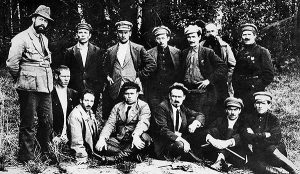
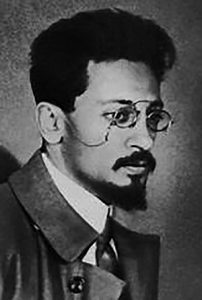
A group of prominent Ural Bolsheviks—some of them involved in the slaughter of the royal family—is photographed at the grave of the Romanovs, 1924. Standing from left to right are: 1st—A.I. Paramonov, 3rd—M.M. Kharitonov, 4th—B.V. Didkovsky, 5th—I.P. Rumyantsev and 7th—A.L. Borchaninov. Sitting, left to right: 1st.—D. E. Sulimov, 2nd—G.S. Moroz, 3rd—M.V. Vasiliev, 4th—V. M. Bykov, 6th—P.Z. Ermakov. On the ground in front of V.M. Bykov is the Mauser gun awarded to P. Z. Ermakov. Also above: Yakov Sverdlov.
According to the guard’s recollection, the empress and Grand Duchess Olga with others during the massacre made a vain attempt at crossing themselves. Yurovsky reportedly raised his gun at Nicholas’s torso and fired; the czar fell dead, after which his killer shot the schoolboy son of the czar and czarina. An assortment of killers then began shooting chaotically until all the intended victims had fallen. Several more shots were fired and the doors were then opened to disperse the smoke and fumes. A few of the martyrs survived the carnage. These unfortunates were stabbed to death with bayonets by Peter Ermakov. It was necessary for him and others to use bayonets as with the doors now open there was a need to keep the noise of the carnage muted.
The last martyrs to die were Tatiana, Anastasia and Maria. Between them the sisters were carrying a little over 1.3 kilograms of diamonds sewn into their clothing. This had given them a degree of protection from the gunshots. These young women and girls were mercilessly bayoneted to death. Olga sustained a gunshot wound to the head. Maria and Anastasia were said to have crouched up against a wall covering their heads in terror until they were shot down. Then Yurovsky personally killed Tatiana and Alexei. Tatiana died from a single bullet through the back of her head. Alexei received two bullets to the head, one behind the ear after the executioners realized he had not been killed by the first shot. Anna Demidova, Alexandra’s maid, survived the initial onslaught but was stabbed to death against the back wall while trying to defend herself with a small pillow that was filled with precious gems and jewels.
While the bodies were being placed on stretchers, one of the girls, possibly Anastasia, cried out and covered her face with her arm. Ermakov grabbed Alexander Stre kotin’s rifle and bayoneted her in the chest. When it failed to penetrate the young woman’s torso he pulled out his revolver and shot her in the head.
Some of Pavel Medvedev’s stretcher bearers had by now begun to rifle through the victims’ clothes for valuables. On seeing such activity, Yurovsky demanded that they surrender looted items or be shot. The attempt to completely destroy the imperial family’s remains began the following day. This operation was assisted by Yurovsky and carried out under the direction of Pyotr Voykov (Pinhus Wainer). The occasion was supervised also by Goloshchyokin and Beloborodov. Voykov recalled that dreadful scene with an involuntary shudder.
He said that when this work was completed, the dismembered cadavers were thrown down a forest mine. Upon this appalling scene of carnage was poured gasoline and sulfuric acid. In a vain attempt to destroy all evidence of the massacre, the parts were afterward allowed to burn for two days.
Voykov later recounted: “It was a terrible picture. We, the participants of the burning of the corpses, were downright depressed about this nightmare. Even Yurovsky in the end could not resist and said that even those few days [were driving him] mad.” (Besedovsky, G.Z., On the Road to Thermidor, 1997. 111-116.)
Soon after the massacre, Yekaterinburg was temporarily liberated by the White Army. An aim of the liberating armies was to discover the mystery of the imperial Russian family’s disappearance. To carry out his investigations, the White Army’s delegated investigator, Nikolai Sokolov, dressed as a peasant in order that he drew as little attention to himself as possible.
It was at this point that the reward for the assassination of the imperial family posted by Wall Street banker Jacob Schiff was settled. Jacob Schiff (1847- 1920) was the Jewish-American banker whose financial clout funded the 1904-1905 Japanese in their war against czarist Russia. Schiff’s apologists and establishment historians say the banker’s generosity was on account of the alleged anti-Semitism of Czar Nicholas II.
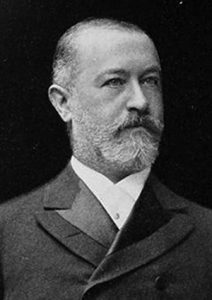
JACOB SCHIFF
Rewarded executioners.
On the basis of the material brought before it the White Army’s official investigator Sokolov drew the following conclusions: The corpses were brought to the mine under the cover of darkness in the early morning of July 17, 1918. Clothing was roughly cut (damage is found on buttons, hooks and eyes). The corpses were then dismembered and completely destroyed by fire and sulfuric acid. . . . To explain the later finding of jewels, Sokolov explained that, according to the testimony of the witness Tyegleva, the grand duchess secretly sewed jewelry in her clothing. The princesses had also secreted gems in their apparel, some of which went unnoticed during the disposal of the family’s remains. When the mine shaft was later excavated, much jewelry was discovered. From the torn brassieres, a rain of pearls and precious stones cascaded.
Some jewelry, mostly earrings and pendants, lay unnoticed in the surrounding grass. Despite the discovery of the jewelry, the executioners and body disposal team worked quickly to finish their work without their paying undue attention to individual items. Witnesses reported the movement of cars and trucks, carts and riders near Ganina Yama, 15 km north of Yekaterinburg. During the period July 17 to 19, 1918, this area was cordoned off by Red Guards. Sokolov writes that during these days grenade explosions were also heard. Sokolov later managed to find two orders drawn up by Pyotr Voykov on July 17, 1918. These orders had been placed with a local drugstore named Russian Society.
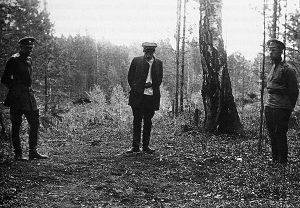
Nikolai Sokolov is shown inspecting the remains of a bonfire near Four Brothers mine outside Koptyaki.
Each order bore the requirement to issue employee Commissariat Zimin with sulfuric acid. The first order was for 5 lbs. with 3 lbs. more placed in the second jar. In total, Zimin was issued 11 lbs. of acid for which was paid 196 rubles and 50 kopecks. According to Sokolov, the acid was delivered to the mine on July 17 and 18. At the mine itself, traces of two large fires were discovered. Here, dozens of objects have since been discovered that relate to the murdered imperial family. Many items were burned or otherwise destroyed. Nothing was spared of the czar’s family. Even their pet dogs were slaughtered.
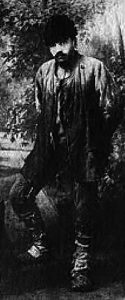
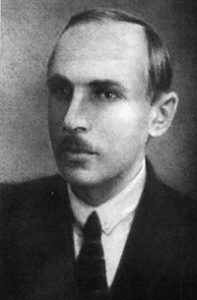
Above, White Army investigator Nikolai Sokolov (1882-1924) is shown undercover, disguised as a peasant (inset right, the “real” Sokolov). It is thanks to this intrepid man that the world now knows for sure the full story of the death of the last Russian czar, his family and retainers. “I was summoned by [Adm. Alexander Kolchak, White Army commander] and entrusted with the investigation,” Sokolov wrote. It was a case, he realized, of crucial importance to Russian history. The chief achievement of Sokolov was to prove the royal family was indeed shot to death, contrary to theories about their fate prevalent at the time. Even when the Whites retreated east after a series of defeats, Sokolov doggedly collected priceless documents and got them out of the country. He himself left Russia for Paris in March 1920, intending to secretly return to Russia and continue the investigation, but died at the young age of 42 in France.
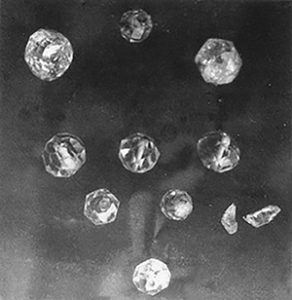
Topaz gemstones found in Four Brothers mineshaft are from a necklace worn by of the czar’s four daughters. Fifteen such stones were discovered in a pile of dirt there. Also found in the same
pile of dirt was a 7.62 mm bullet from a Nagan pistol, evidently used in the murder of the Russian
imperial family and their loyal servants.
Following the massacre of the imperial family the German-born Jacob Schiff celebrated the funding of the 1917 Bolshevik coup which had brought about regime change in Russia. Schiff had personally underwritten a substantial reward for the murder of the Russian royal family. This Jewish banker’s investment funded a tyranny which, at the time of its collapse in 1990, is estimated to have directly or indirectly led to loss of life estimated between 70 and 100 million mostly European Christians.
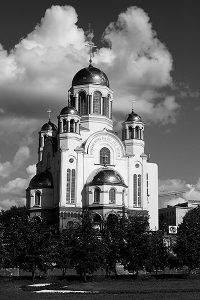
The Church on Blood in Honor of All Saints Resplendent in the Russian Land was built on the site
of the Ipatiev house in Yekaterinburg where Nicholas II and his family were martyred.
Thus, Schiff appears to have achieved the dubious distinction of being the biggest mass-murderer in the history of humankind. On the night of the New York celebrations, a letter penned by the banker was read out to the ecstatic attendees: “Will you say for me to those present at tonight’s meeting how deeply I regret my inability to celebrate with the Friends of Russian Freedom the actual reward of what we hoped for and striven for these long years?”— Jacob Schiff of the New York bankers Kuhn, Loeb & Co. Quote from: New York Times, March 24. 1917.
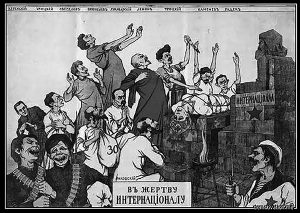
SACRIFICED ON THE ALTAR: Cartoon caricature Bolsheviks laugh as Lenin and Trotsky sacrifice a mitred religious figure representing the church of Mother Russia to their pagan god Karl Marx. The number 30 on the bag in the center may refer to the 30 pieces of silver paid to Judas according to the Bible for betraying his Lord.
From this point on, the insurrection was to continue until 1922. Soon after the expulsion of the White Armies, corporate America and Europe moved in to plunder the assets of the large nation that was, before the coup, Imperial Russia. Yekaterinburg bore the name of Sverdlovsk from 1924 to 1991. The street on which the Ipatiev House was situated was renamed Sverdlov Street. In this grim building, Russian Emperor Nicholas II, his family and members of his household staff, were ruthlessly massacred. In 1991, a decision was made that this city’s name be returned to its original name of Yekaterinburg. During his tenure, Russian President Vladimir Putin has atoned for the crimes carried out by the Bolsheviks in some ways.
Throughout the Russian Federation now appear monuments dedicated to the memory of the Gulag network of slave camps. Ipatiev house was razed to the ground during the Soviet period in 1977. On the ruins of the demolished house now stands Yekaterinburg’s Church of the Blood Cathedral. In addition to the cathedral, the Church of St. Nicholas (the czar has since been canonized) has been built at the Romanov Monastery. This holy place of pilgrimage is situated close to where the czar and his family’s remains were discovered at Ganina Yama.
Michael Walsh, leader of the British Movement from 1968 to 1984, is arguably the post-war’s most influential ethno-nationalist. An Irish national, his father Patrick was a U.S. national guardsman and associate of Ernest Hemingway. A frontline fighter in four conflicts, his father’s spirit inspired Michael to match his colorful life. Michael, an international journalist and broadcaster, was voted writer of the year by Euro Weekly News. Semi-retired, he lives in Mediterranean Spain and is the author of 39 books.